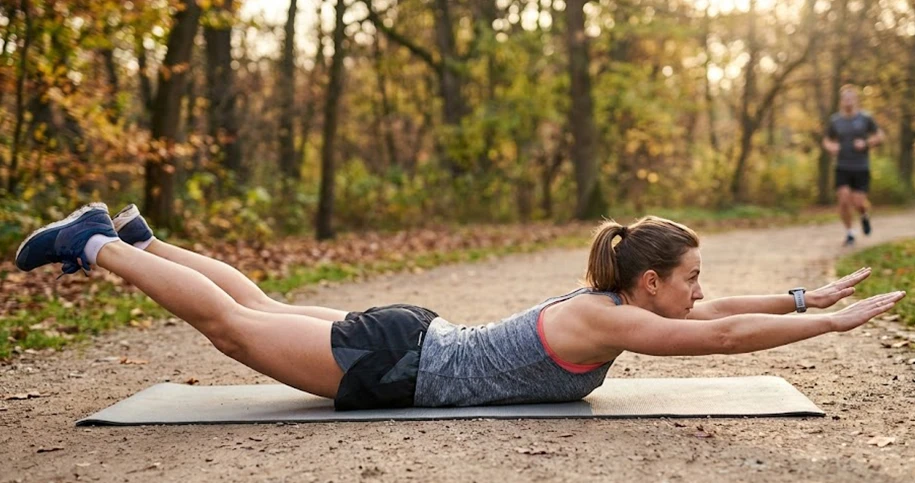Whatever your goal, there are three main systems that need to be trained for you to start running faster and improving your speed.
Whether you're new to running or you've been running for years, you're probably just like me and most other runners in that you'd like to run faster.
Maybe you want to run a faster 5km, improve your marathon time or simply you want run without getting tired after 200m.
Whatever your goal, there are three main systems that need to be trained for you to start running faster and improving your speed:
- Energy systems;
- Neuromuscular system;
- Biomechanics.
Now let's go through these one by one.
Energy systems
This is where beginners make the mistake of thinking that they need to run every run as fast as they can to get faster. In fact, that's what will get you injured, and the opposite is actually true.
It's actually your level of aerobic fitness that dictates how fast the running pace you can maintain for anything beyond approximately 90 seconds of running.
Your anaerobic energy system can produce energy for shorter, more intense, bouts of exercise, but for anything beyond 90 seconds, your aerobic energy system is the key determining factor in how fast you can continue to run.
So, how do you train aerobic fitness?
Well, it mainly requires lots of easy-paced aerobic running, slow conversational effort runs.
In fact, if you're getting out of breath on these runs, you're going too fast. Improving your aerobic fitness with these low intensity runs is all about training volume and frequency.
To run faster, you need to dedicate a 16-20 week block of aerobic training where you run between 80% and 100% of your weekly mileage in your aerobic training zone.
During this training block, aim to gradually increase your weekly mileage, if you're running using a heart rate monitor, you'll notice that as the weeks go by, you'll gradually start to run at a faster pace for the same heart rate.
That's when you know that your aerobic training is working!
Now, please don't get me wrong.
There is, of course, an important place for tempo work, interval workouts, and other types of speed training in your program.
But these are best saved for a phase when you're preparing for a specific race, once you've already taken the time to build your aerobic base.
Neuromuscular system
You know, there's some truth to the saying that long-slow runs make long-slow runners. As I mentioned a moment ago, you really do need to put in the miles with lots of easy-paced aerobic running to build your aerobic engine.
But if you don't also tune your engine with some faster running, you're building yourself a workhorse, not a racing car.
It's great to develop aerobic endurance, but you also need to train the neuromuscular system, the link between the brain and the muscles, to develop the leg speed and coordination to run efficiently at faster paces.
That's where running regular sets of strides in your weekly training schedule becomes really helpful.
You could even incorporate some low-level plyometrics into your training, like jumping rope. You don't need to smash your body with lots of speed workouts.
Doing regular sets of strides and short bouts of jumping rope each week will help you train your body for the neuromuscular demand of running faster, without putting too much extra stress on your system while you're also building your mileage with all the aerobic running.
Biomechanics
Now we're all slightly different and there's no one-size-fits-all perfect running style, but there are a few aspects of technique that all runners need to work on if they want to run faster.
The two factors that determine your running pace are your stride length, the distance over ground you cover with each stride, and your running cadence.
So if you want to run faster, you need to both increase your stride length and your cadence.
The easiest way to increase your stride length is to focus on lifting both your heel and your knee just that little bit higher than you would do normally as you run it to give them pace.
You should also focus on gently increasing your cadence to make slightly quicker strides as you pick your feet up a little bit more than you're used to and drive your knees up and forwards to lengthen your stride.
It'll feel weird at first, but it will help you lengthen your stride and help you run faster!
Conclusion
To run faster, focus on three key areas: energy systems, neuromuscular system, and biomechanics. Build your aerobic fitness with easy-paced runs over 16-20 weeks. Enhance your neuromuscular system with strides and plyometrics. Improve biomechanics by increasing stride length and cadence. These strategies will help you achieve your running goals, whether it's a faster 5K or better endurance.




.webp)
.webp)
.webp)